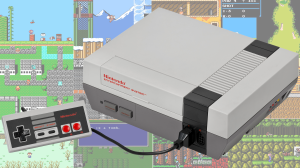The debut season of The Mandalorian was an impressive technological achievement, as, instead of venturing to exotic locations around the globe, the first live-action Star Wars series pushed the boundary of visual effects and conveyed otherworldly exteriors with an immersive digital backdrop, with Industrial Light & Magic sharing a new featurette about how they brought Season 2 to life. Rather than being content to embrace similar techniques used in that first season, the studio continued to pave a new path forward for the series, allowing even more impressive sequences to be realized for the sophomore stories from the galaxy far, far away.
Videos by ComicBook.com
“For the second season of Lucasfilm’s hit Disney+ series, The Mandalorian, Industrial Light & Magic reengineered their StageCraft virtual production platform rolling out version 2.0 in which ILM introduced among other things, Helios, Industrial Light & Magic’s first cinematic render engine designed for real-time visual effects,” ILM described of the featurette. “Engineered from the ground up with film and television production in mind, Helios offers incredible performance, high fidelity real-time ray tracing, the ability to rip through scenes of unparalleled complexity, all while leveraging ILM’s unrivaled color science, and was designed from the start to work seamlessly with ILM StageCraft. The purpose-built, production-hardened platform allows filmmakers to explore new ideas, communicate concepts, and execute shots in a collaborative and flexible production environment.”
Despite how much the studio was able to capture on set, not all of the effects could be conveyed through this process, with ILM sharing another featurette earlier this month about how they pulled off some of the more fantastical elements of the series.
“Visual effects work on The Mandalorian was completed in all five of ILM’s studios (San Francisco, Singapore, Vancouver, London, and Sydney) as well as a contingent of other vendors under ILM’s supervision,” ILM detailed about their work on the series. “The season’s eight episodes encompassed nearly 5,000 visual effects shots in addition to all of ILM’s real-time effects work done for use during principal photography. The effects team leveraged virtually every trick in the book, from miniatures and motion control to traditional puppeteering, advanced animatronics, spectacular special effects, and photo-real CG. Here’s a sampling of ILM’s post visual effects work done for the series that garnered ILM 13 Visual Effects Society Award nominations.”
A new season of the series is expected to debut later this year.
What was your favorite effect in Season 2? Let us know in the comments below or contact Patrick Cavanaugh directly on Twitter to talk all things Star Wars and horror!








